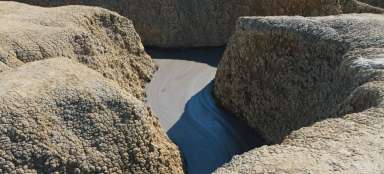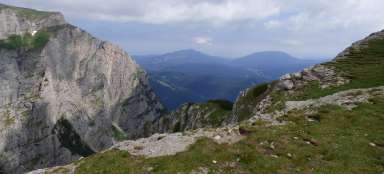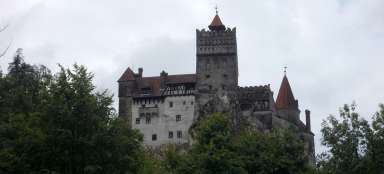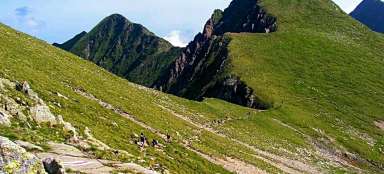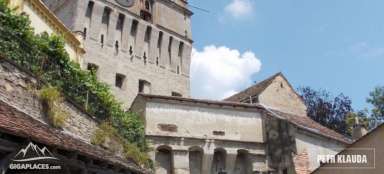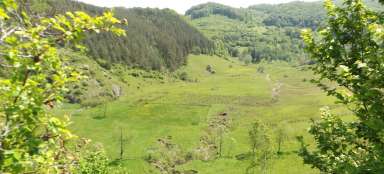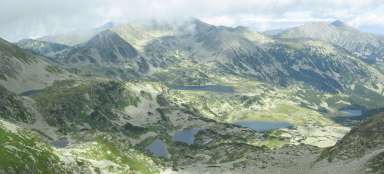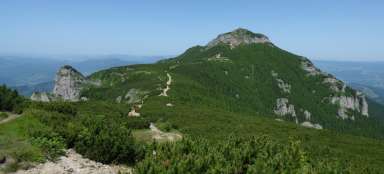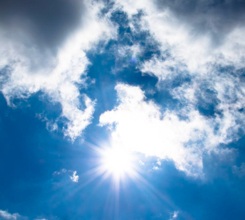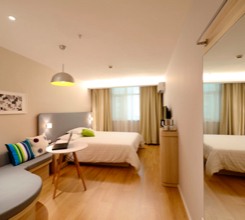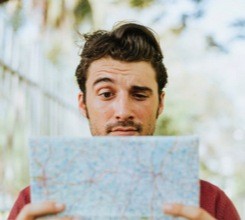Part 2. Bucharest

The capital of Romania, where ancient history mixes with the history associated with dictator Nikola Ceausescu
Bucharest
A day trip from Brasov
On Tuesday morning, the weather is much better, so I choose my lower limbs again to move to the train. The passenger train to Bucharest leaves at 6 o'clock and after less than 4 hours of driving it should take me to the „Nord“ station, ie the main station in the Romanian capital. I buy a ticket at the counter for 24 RON. Here is just a note on train prices, if you know exactly when you will go, the best way to buy tickets about a month in advance on the Internet, then the fare is about 25% cheaper than at the box office and the closer the departure date the more the fare increases. IR trains (similar to our express trains) are about 100% more expensive than passenger ® trains. Otherwise, tickets for a specific train number are issued for passenger trains, so if you are not sure of departure, do not buy anything in advance, the price of IR trains also includes a seat. The train consists of an electric locomotive and 3-storey wagons the same as in the Posázavský Pacific, only in a blue-yellow combination. After the start, I remember the times, as 25 years ago, when express trains to Moravia and Slovakia took a step away from the main railway station in Prague, namely the massive clapping of wheels over rail connections. Only after a complete exit from the station does the train pick up a bit, but I would still characterize its ride as „very prudent“. But it doesn't matter, I'm not on the run, at least I can enjoy nature. We climb the mountains and the Predeal saddle and then the Busteni and Sinaia stations await us. I still remember the first and last name from the ČEDOK winter catalog before the year 89, where they were offered as winter Romanian destinations with the Poiana Brasov resort. Then the train just descends to the city of Ploiesti and from there by plane here a little faster to the Romanian capital. The first concern after the climb was to get an all-day ticket for public transport. Beware here, another company operates the metro and other trams and other public transport. Next to the station I find a ticket machine, where I buy an all-day ticket for 9.6 RON (including a card for 1.6 RON) and then I move underground, where I buy an all-day metro ticket for 8 RON from the machine (with vending machines you can easily chat in English). And I enter the subway station. The local underground began to run in 1979 and, somewhat surprisingly, unlike other cities in the former bloc, Russian cars never drove here (as in Prague, Warsaw, Budapest, Sofia), but the local cars were manufactured under license in Romania in wagon 23. October and rather resembled western cars. The metro network has 4 lines, another 2 are being prepared, interesting is line number 1, which departs from Dristor2 station, surrounds the city center, and via Dristor 1 station (where there is a transfer to it itself) exits to the suburbs. After validating the ticket in the turnstile, I go underground and get on the train in the direction of Dristor 2. At the final, I change to the Dristor 1 station and wait for the train, which goes to the final just a few meters above me. But I perform on Piata Unirii Square, which is a short walk from the historic city center. Here I cross a busy road and get into the narrow streets of the city center. First, I come across the archeological site of Curtea Veche, where the remains of the residence of Vlad III Dracula, who from there managed the defense against the Turks. Right next door is the church of St. Antonína built in 1559 and is the oldest maintained building in Bucharest. I continue along Strada Selari and Strada Lipcani. It can be seen that a lot of work will still be needed to repair all the local houses, some look decent, but some are about to fall apart. Opposite the old town in front of Ion Constantine Bratina Boulevard is the Church of St. George – the new one, founded by Prince Constantine Bracoveanu. In the courtyard of the church is the first Romanian bookstore. A few tens of meters further on the boulevard there is another architecturally significant building – the Coltea Hospital. The first place where patients were treated here has been here since 1704, the building that can be seen dates back to 1887. Next door is the Coltea Church, which is even older than the original hospital buildings. Returning to the old town, here in the bend of Strada Blanári I come across the Church of St. Nicholas, which was destroyed several times by an earthquake and fire, and the current form dates back to 1867, but was mentioned 2 centuries earlier. Across the street is a crowd of people with Ukrainian passports, waiting for work permits to be processed. Despite the fact that Romania is one of the poorer countries in the European Union, it pays to work here for citizens from the post-Soviet republics. Then I take a photo recording at the National Library and the seat and museum of the National Bank, and then a real gem awaits me – the Stavropol Monastery. It was built in the so-called Brancovean style in 1724 in the courtyard of the inn. To this day, only the church remains of the monastery, part was destroyed by an earthquake, part under communism. Today it houses the largest collection of Byzantine music books. I am coming to the boulevard again, this time on the other side of the historic center of Bucharest. Opposite me, the CEC palace from 1900 hits the eye, today the seat of the bank, and a little further north I find another church in Zlatari, whose origins date back to the 17th century and was also destroyed several times by an earthquake. And gradually I get to the biggest (for me) attraction, namely the former Ceausescu Palace, today the seat of the Romanian Parliament. It is located about one big block from the old town, on Svobody Boulevard. From the hill above the busy boulevard, the second largest building in the world, with several museums, looks majestically. You can also buy a ticket just to climb the terraces above the boulevard, but given that the fountains that divide the boulevard Unirii into two halves were under reconstruction, and the view would not be very nice, I regretted it. Opposite this building are also the ministries' buildings, and I was just weaving between TV cameras and journalists. A rare visit to Bucharest? But in general, Just the presentation of new cleaning cars for the city. I am bypassing Parliament on the right. Only fencing measures over one kilometer in this direction. But what does Parliament stand for? It will be the Orthodox Cathedral of the Salvation of the People. And its size? It occurs to me that if they failed to have the largest building in the world in Romania, at least they would have the largest cathedral. At the end of the fencing, I still find a small church, a chapel, which was built in 2011 and it is actually such a replacement until the entire cathedral is completed. I walk around the whole parliament and go back along its left side, from where there is also the only access to the building. Other entrances and entrances are guarded. Through Izvor Park, from where there is still a decent view of the majestic parliament building, I take the metro and drive to Victory Square (Piata Victoriei), my plan is to reach the village museum, which is located in the northern part of the city near the river Colentina. But everything is different. There are no maps or timetables at tram stations, so the fact that the tram will run can only be read from the number painted on the column of the stop. After boarding the line on the opposite side and still wasting more time searching, I ended up as different as I wanted, so from the Bucharest Noi depot I decided to return to the station and buy a ticket for the way back. This time I get on a trolleybus, which seems two generations younger than a tram. The information system and stop reporting also work here. Since I still have time, I perform at the Orthodox Cathedral of St. George, which was built between 1926 and 1931. I had a good idea to come to the station earlier, because paradoxically, I had a problem with English when buying a ticket. In the end, a young lady had to come to my aid. Honestly, during the time that the cashier was checking in for me, I already understood their system and I would easily print my ticket myself, that is, if the glass of the counter did not prevent me from doing so. After a quick lunch in the fast food, returning to Victory Square once again, there are a number of impressive buildings and museums, such as the National Peasant Museum, the National Museum of Nature and the National Geological Museum. Traffic is partly on the surface and partly underground, but there is still a lot of traffic, larger than in Prague, the boulevards are often three-lane in both directions. I sit in my place and the interregion train takes me back to Brasov. Clean air-conditioned car, chemical toilet, information system … well on the level. And I summarize the experiences of the Romanian capital. To tell you the truth, I wasn't too excited. Maybe he would like to fine-tune a bit, repair the old houses in the historic center, I'll see what awaits me tomorrow as number one in the TOP 10 – Sighishoara. But only in the next part.
Church of St. Anthony
The oldest maintained church building in Bucharest
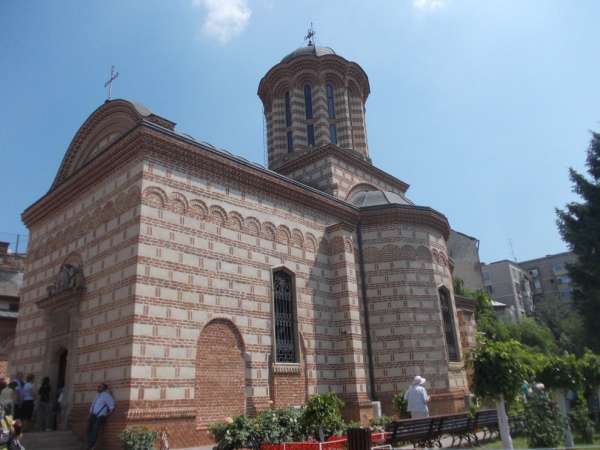
Coltea Hospital
This is a building from 1887, but its predecessor stood here 200 years earlier.

Church of the Salvation of the People
The church, which is located in the back of the plot on which the parliament stands, was built in 2011 and is such a temporary building until the completion of the cathedral of the same name of much larger dimensions.
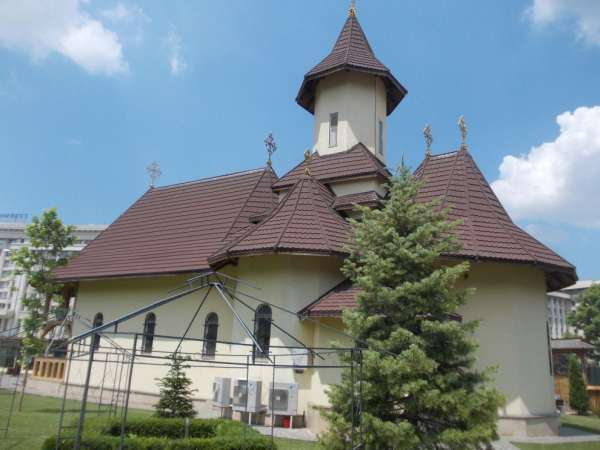
Stavropol Church
Only the church remained on the site of the monastery from 1724. Part was destroyed by an earthquake, part by the communists.
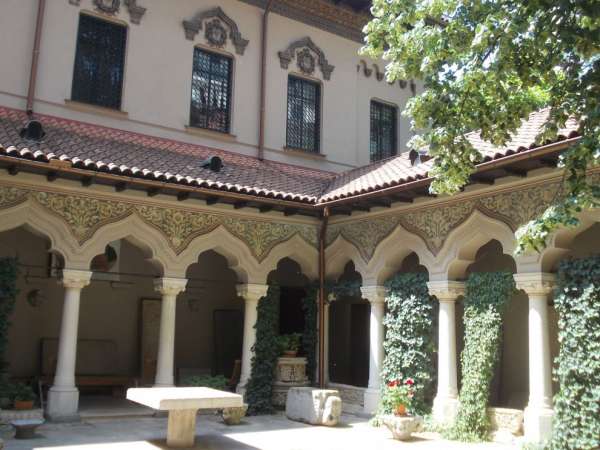
St. George's Cathedral.
St. George's Cathedral from 1931 is located near Bucharest Nord Station.
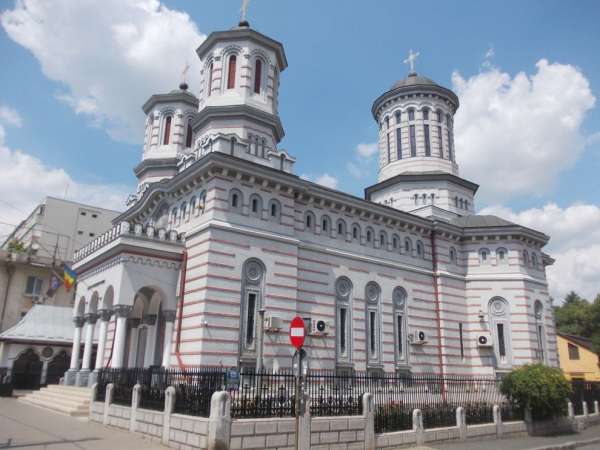
Bucharest metro
The metro in Bucharest has been running since 1979 and, unlike the other fraternal countries of the Soviet Union, Soviet cars have never been driven here.






